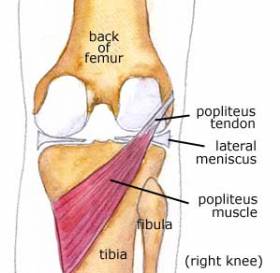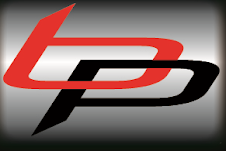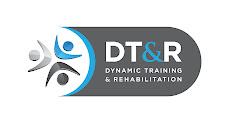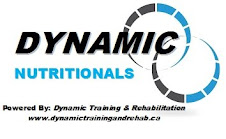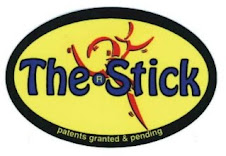This is one of my favorite times of the year is when I get the see athletes that have worked for over 4 years, competing on the world stage, for their country. At Dynamic Training & Rehabilitation and Bogar Performance Institute, we work with over a dozen high performance olympic athletes, mainly in the prehab and injury prevention division.
I am going to shift away from the Vancouver 2010 Olympic Games and talk about the next two years, leading up to the 2012 summer games in London, England.
This past weekend, I sat down with one of our summer games medal contendor, talking, planning, and asses the last 2 years, and the next 2 years leading up to London. We watched every piece of video tape, mapped out a plan, and asses everything from her toes to her head so we could make a plan leading into the next summer games.
We created a strength plan with the athletes sports and conditioning coach with an biomechanic assesment plan I put together.
Now, we are on the road to an alternative health care plan that utilizes massage therapy, osteopathic techniques, Acupuncture, Active Release Therapy, and chiropractic adjustments.
Keep posted to this blog as we will continue to write, take pictures, and have progfress repots about one of our athletes that will be podium bound in 2012!
Monday, February 22, 2010
Sunday, February 7, 2010
The True Source of Knee Pain
I would like to start of this blog on the right foot and talk about a problem I see everyday, with every patient..........knee pain or dysfunction!
There is a lot of controversey on the web and in journals regarding athletic performance and knee issues. Most writers and Sports Conditioning Specialist/Personal Trainers tend to argue that the true componant of knee pain and dysfunction starts at the VASTUS MEDIALIS or commonly known as the VMO.
The purpose in todays blog post is to give you some insdies ideas and point of views that will hopefully open your way of training and increase overall performance and education on a very broad topic: Knee Dysfunction.
Through my practice and clinical setting, 90% of knee complaints recieved have an altered Popliteus Muscle upon Orthopeidic Testing, Palpation, and Strength Testing.
Let's first get into anatomy:
The popliteus is believed to have a number of functions, made possible by its unique ability to reverse its origin and insertion, depending on whether the femur or the tibia is fixed.
1.Internal rotation of the tibia in an already extended knee. Due to the contour of the femoral condyles, this internal rotation of the tibia ‘unlocks’ an extended knee. In essence it initiates knee flexion.
2.External rotation of the femur on a tibia that is fixed, as in the stance phase of gait. It is an important controller of knee rotation during the stance phase of locomotion.
3.Helps to bring the knee out of a position of full extension.
4.Helps the PCL (posterior cruciate ligament) maintain stability by preventing excessive posterior translation of the tibia.
5.Helps to withdraw the lateral meniscus during knee flexion.
6.Provides some rotary stability of the femur on the tibia.
7.Prevents excessive external rotation and varus rotation of the tibia during knee flexion
In short, a popliteus that is tight and in spasm will cause a number of problems. The most significant of these is lack of full knee extension and lack of external rotation of the tibia on the femur. Both these movements will be affected by a tight popliteus that has a high resting and active level of muscle tone. Why does the popliteus exhibit increased reactive muscle tone? There are three main possibilities.
A tight popliteus has been shown to alter gait, therefore increasing pressure and force through the knee joint.
To many authors and therapist, the popliteus may be known as the "fifth ligament". In my opinion this assumption may be true becuase of the ramifications that this muscle will of on surrounding structures of the knee. One of the most obvious roles in altered biomechanics that the popliteus will inhibit is the VMO or Vastus Medialis Muscle. When the popliteus muscle is tight and spasm, it will cause a lateral translation of the Tibia. This is when the Tibia is pulled lateral on the femur. The result action of this translation will cause an inhibitation of the VMO Muscle, one of the important patella tracking muscles.
Treating Options:
After reading this article, you may ask: "Well, what do I do about it?"
1) Myofascial Rolling
Do this prior to every workout? Focus on working all superficial fascial chains in the body
2) Self Tissue Release or Massage with Ischemic Compressions\
Whenever you are sitting watching tv, at the computer or in bed, just go ahead and massage the little muscle. Get it losse, and free of any adhesions that may be hindering the muscle
3) Dynamic Activivation:
Perform Dynamic Activation Drills along side your foam rolling prior to each workout.
Other Therapies and recomendations:
I always suggest to recieve a full functional assesment by a health care professional. When an issue like popliteus causes enough dysfunction, pain, and altered gait, it is in my opinion that it is changing a handful of other structures that act on the knee, hip, ankle, and low back areas.
A few benefitial therapy tools:
- Contemporary Medical Acupuncture
- Active Release Techniques (A.R.T)
- Graston or SASTM Myofascial Release
- Osteopathic or Chiropractic Techniques
As a practitioner with a background in Osteopathy and Soft Tissue Dysfunctions, I do not solely believe that the Popliteus is the one aspect of knee pain, but may be a source, or a symptom of another dysfunction in the human body. The purpose of this blog post was to educate exercise enthusiest in other reasons why knee pain may persist. Major imbalance in the hip, low back, and ankle will also cause nociceptive fireing or pain in the knee.
To learn more on knee pain and exercise, keep posted to this blog or you may contact adam directly at adam@dynamictraining.ca
There is a lot of controversey on the web and in journals regarding athletic performance and knee issues. Most writers and Sports Conditioning Specialist/Personal Trainers tend to argue that the true componant of knee pain and dysfunction starts at the VASTUS MEDIALIS or commonly known as the VMO.
The purpose in todays blog post is to give you some insdies ideas and point of views that will hopefully open your way of training and increase overall performance and education on a very broad topic: Knee Dysfunction.
Through my practice and clinical setting, 90% of knee complaints recieved have an altered Popliteus Muscle upon Orthopeidic Testing, Palpation, and Strength Testing.
Let's first get into anatomy:
The popliteus tendon originates on the lateral surface of the lateral femoral condyle (in front of and below the lateral collateral ligament origin) and also from the fibular head. It also has an origin stemming from the posterior horn of the lateral meniscus. The tendon then courses under the lateral collateral ligament, descends into the ‘popliteal hiatus’, and becomes extra-articular (outside the knee joint) before joining its muscle belly. It inserts into the tibia above the popliteal line. It is therefore a relatively horizontal muscle lying deep in the back part of the knee.
The popliteus is believed to have a number of functions, made possible by its unique ability to reverse its origin and insertion, depending on whether the femur or the tibia is fixed.
1.Internal rotation of the tibia in an already extended knee. Due to the contour of the femoral condyles, this internal rotation of the tibia ‘unlocks’ an extended knee. In essence it initiates knee flexion.
2.External rotation of the femur on a tibia that is fixed, as in the stance phase of gait. It is an important controller of knee rotation during the stance phase of locomotion.
3.Helps to bring the knee out of a position of full extension.
4.Helps the PCL (posterior cruciate ligament) maintain stability by preventing excessive posterior translation of the tibia.
5.Helps to withdraw the lateral meniscus during knee flexion.
6.Provides some rotary stability of the femur on the tibia.
7.Prevents excessive external rotation and varus rotation of the tibia during knee flexion
In short, a popliteus that is tight and in spasm will cause a number of problems. The most significant of these is lack of full knee extension and lack of external rotation of the tibia on the femur. Both these movements will be affected by a tight popliteus that has a high resting and active level of muscle tone. Why does the popliteus exhibit increased reactive muscle tone? There are three main possibilities.
A tight popliteus has been shown to alter gait, therefore increasing pressure and force through the knee joint.
To many authors and therapist, the popliteus may be known as the "fifth ligament". In my opinion this assumption may be true becuase of the ramifications that this muscle will of on surrounding structures of the knee. One of the most obvious roles in altered biomechanics that the popliteus will inhibit is the VMO or Vastus Medialis Muscle. When the popliteus muscle is tight and spasm, it will cause a lateral translation of the Tibia. This is when the Tibia is pulled lateral on the femur. The result action of this translation will cause an inhibitation of the VMO Muscle, one of the important patella tracking muscles.
Treating Options:
After reading this article, you may ask: "Well, what do I do about it?"
1) Myofascial Rolling
Do this prior to every workout? Focus on working all superficial fascial chains in the body
2) Self Tissue Release or Massage with Ischemic Compressions\
Whenever you are sitting watching tv, at the computer or in bed, just go ahead and massage the little muscle. Get it losse, and free of any adhesions that may be hindering the muscle
3) Dynamic Activivation:
Perform Dynamic Activation Drills along side your foam rolling prior to each workout.
Other Therapies and recomendations:
I always suggest to recieve a full functional assesment by a health care professional. When an issue like popliteus causes enough dysfunction, pain, and altered gait, it is in my opinion that it is changing a handful of other structures that act on the knee, hip, ankle, and low back areas.
A few benefitial therapy tools:
- Contemporary Medical Acupuncture
- Active Release Techniques (A.R.T)
- Graston or SASTM Myofascial Release
- Osteopathic or Chiropractic Techniques
As a practitioner with a background in Osteopathy and Soft Tissue Dysfunctions, I do not solely believe that the Popliteus is the one aspect of knee pain, but may be a source, or a symptom of another dysfunction in the human body. The purpose of this blog post was to educate exercise enthusiest in other reasons why knee pain may persist. Major imbalance in the hip, low back, and ankle will also cause nociceptive fireing or pain in the knee.
To learn more on knee pain and exercise, keep posted to this blog or you may contact adam directly at adam@dynamictraining.ca
Subscribe to:
Posts (Atom)
Disclaimer:
Please be advised that there are risk invloved in participating in any exercise program. By Participating in the Demand of Corrective Exercise and Fitness classes, members or participants are assuming all risks of injury that may result. Bogar Performance and Dynamic Training & Rehabilitation, our Therapist, Trainers, and our third parties shall not be liable for any claims for injuries or damages whatsoever, resulting or connected with the use of this blog and website. We further disclaim any liability caused by intentional or unintentional negligance.
The sole purpose of this blog is to be an education resource for trainers, therapist, and workout enthusiast. Pleas seek a Health Care Provider prior to starting any exercise program and therapy.
The sole purpose of this blog is to be an education resource for trainers, therapist, and workout enthusiast. Pleas seek a Health Care Provider prior to starting any exercise program and therapy.

